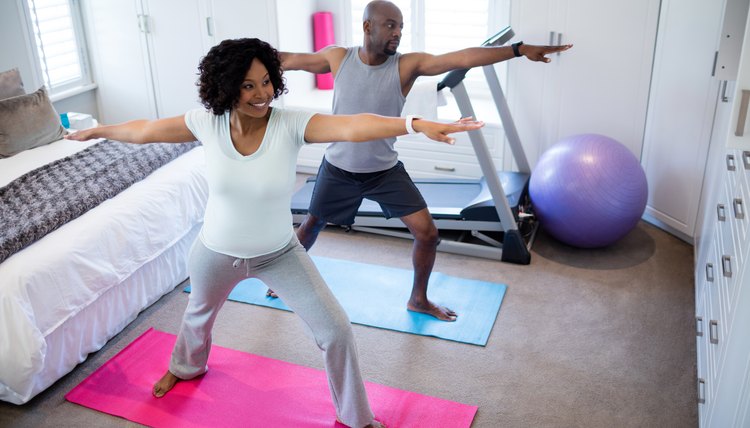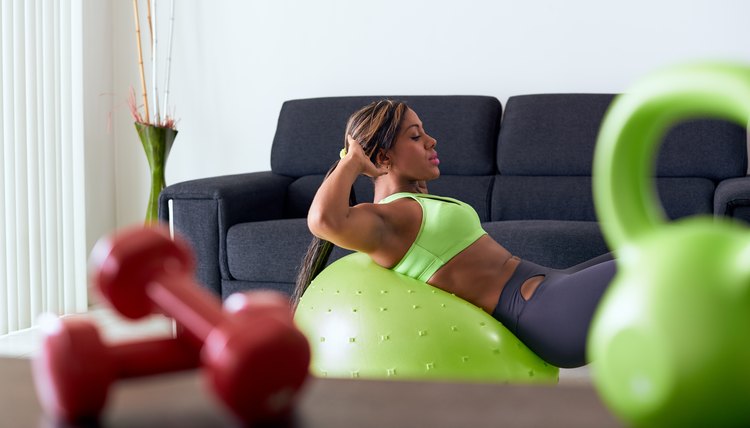P90X Classic vs. P90X Lean

The popular P90X program is designed to transform your body in just 90 days. The program you choose, though, is up to you. The Classic plan combines strength and cardio, while the Lean plan focuses more heavily on cardio.
For the first eight weeks of both Classic and Lean, the program features three weeks of intensive training followed by one week of recovery. The last five weeks consist of four weeks of intense training followed by one final week of recovery.
The P90X Classic program focuses on a lot of resistance exercises to build up strength and conditioning. With an emphasis on strength training, the program aims to add bulk by increasing muscle tone. On the other hand, the P90X Lean program works to enhance your cardio, which is the best way to reduce your body fat quickly. The lean program focuses on reducing body fat in an effort to make the body lean and toned.
Picking the Right Program
With its emphasis on strength training, the P90X Classic program is ideal for men and women who wish to add muscle tone. Because muscle weighs more than fat, this program might not be ideal for people who want to see a lower number on the scale.
However, with its focus on cardiovascular exercise, the lean program is deal for people who wish to lose weight or tone the body without adding too much muscle. However, women are more likely to use the Lean program.

P90X Classic vs. P90X Lean
Upper-Body Workouts
In the P90X Classic program, you will complete the “Chest & Back” workout in weeks one, two, three, nine and 11. During these same weeks, you will also complete the “Shoulders & Arms” workout. The arm workouts change slightly for weeks five, six, seven, 10 and 12. During these weeks, you will complete the “Chest, Shoulders & Triceps” workout and the “Back & Biceps” workout.
In the P90X Lean program, the arm workout for weeks one, two, three, nine and 11 is the “Shoulders & Arms” workout, while weeks five, six, seven, 10 and 12 use the “Chest, Shoulders & Triceps” workout.
Lower-Body Workouts
The lower body workout remains the same for both P90X Classic and P90X Lean. Throughout every week of the program except the three recovery weeks, you will complete the “Legs & Back” workout. The nearly hour-long workout occurs once per week and features a variety of leg exercises and pull-up exercises.
The Classic program also features a “Plyometrics” workout, which you will complete every week except for weeks four, eight and 13. The Daily Burn website explains the video as “jump training,” which “improves your ability to run faster, jump higher, and maneuver in multidirectional sports.”
Cardiovascular Workouts
The Lean program utilizes cardiovascular workouts more often than the Classic program. The “Cardio X” workout shows up on every single week of the 13-week Lean program. The video is complemented by the “Kenpo X” martial arts workout, which also is completed every single week. Although “Kenpo X” is completed every week of the Classic program, the “Cardio X” workout is never used.
Stretching amd Abdominal Workouts
Both workout programs feature both the “Yoga X” and “X Stretch” videos at least once per week. During the recovery weeks, these videos are completed twice. For the abdominal workouts, both the Classic and Lean program utilize the 15-minute “Ab Ripper X” workout. Except for recovery weeks, this belly-blasting workout is done multiple times per week.
The Classic program uses the 15-minute workout three days per week, while the Lean program only uses it twice per week. However, the Lean program also utilizes the “Core Synergistics” workout once per week throughout all 13 weeks. The Classic program only uses the “Core Synergistics” video during recovery weeks.
Resources
Writer Bio
Krista Sheehan is a registered nurse and professional writer. She works in a neonatal intensive care unit (NICU) and her previous nursing experience includes geriatrics, pulmonary disorders and home health care. Her professional writing works focus mainly on the subjects of physical health, fitness, nutrition and positive lifestyle changes.
